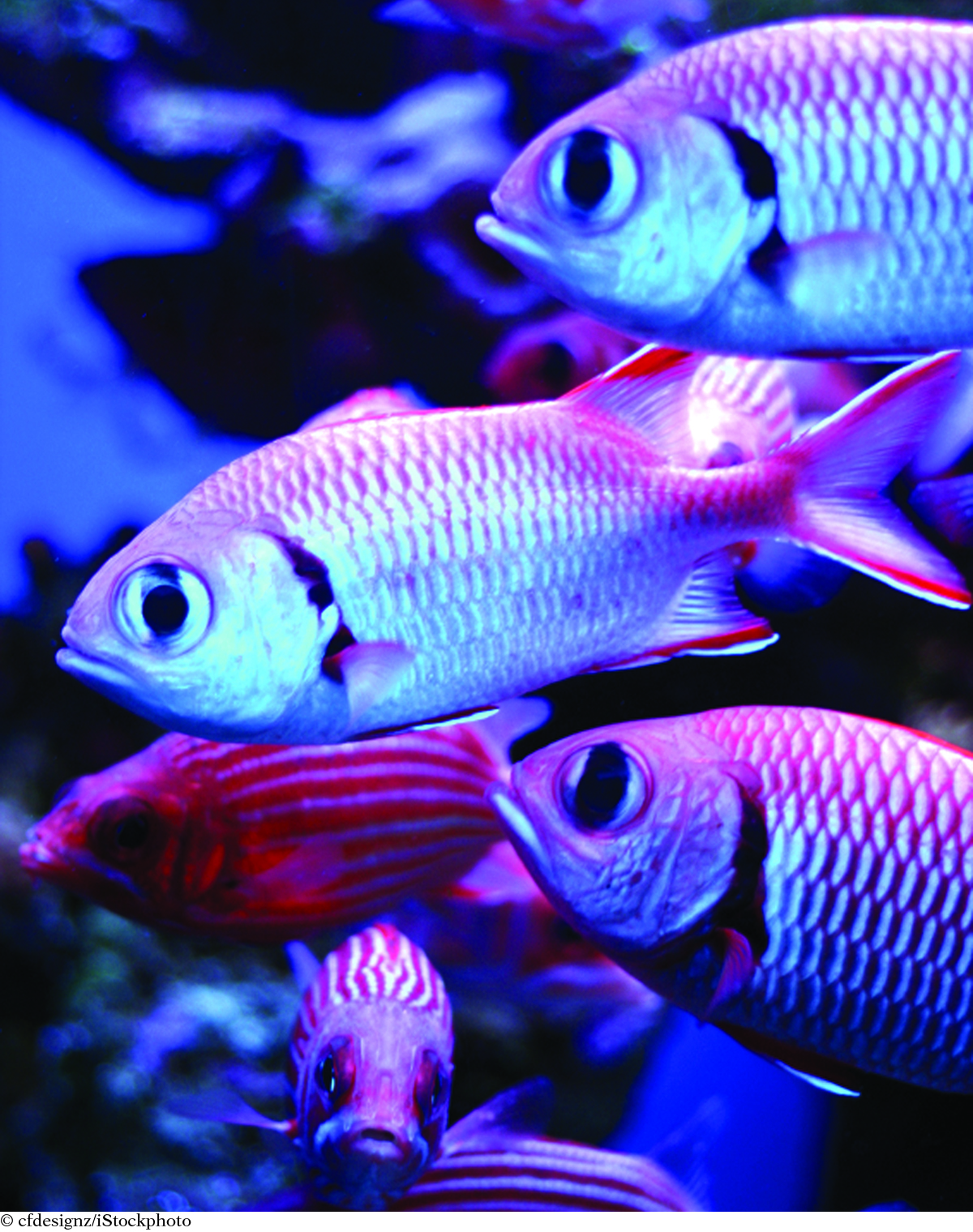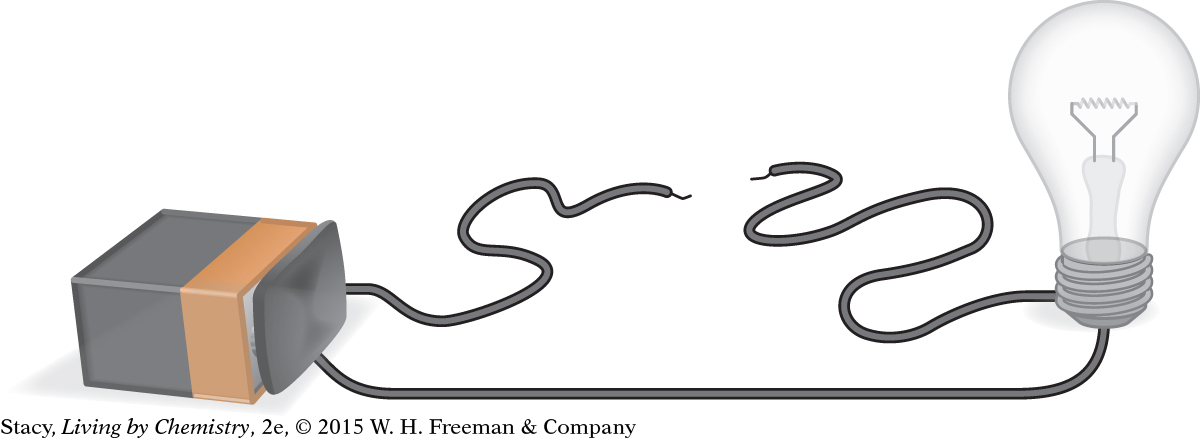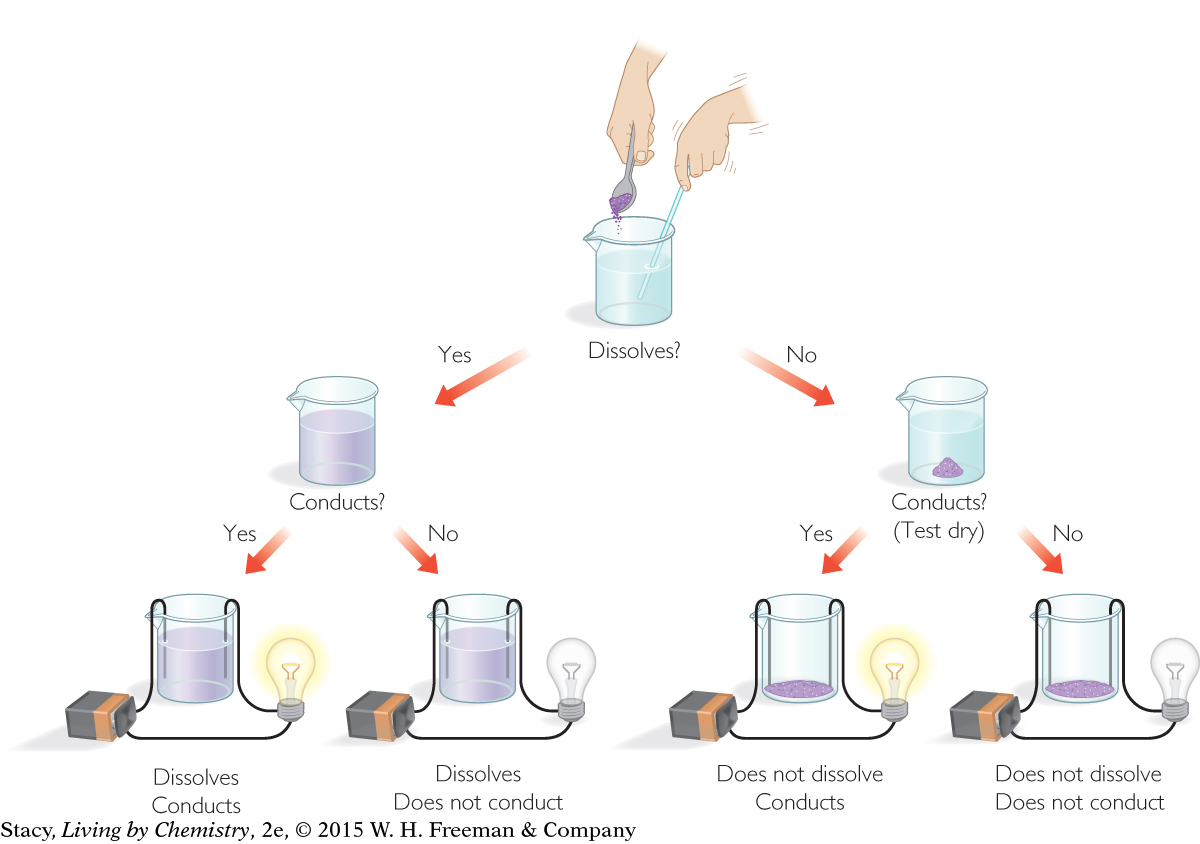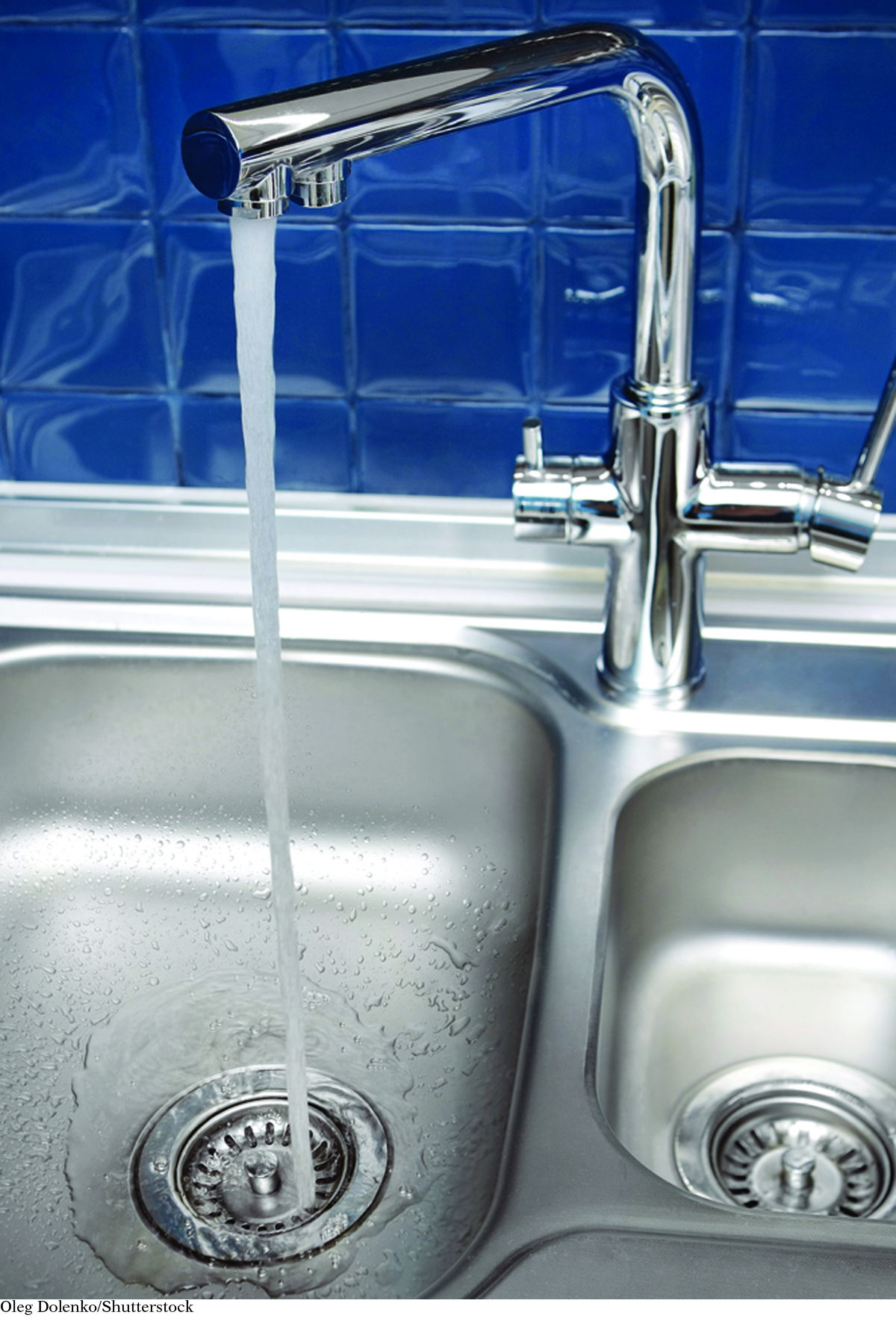LESSON 25: You Light Up My Life: Classifying Substances
THINK ABOUT IT
If you accidentally drop a piece of jewelry into a tub of water, you should have no trouble getting it back again. However, if you drop a cube of sugar into the water, it will dissolve. Some substances dissolve in water and others do not. So, dissolving is one property of matter that you can use to sort substances into general groups.
How can substances be sorted into general categories?
To answer this question, you will explore
Dissolving and Conductivity
Testing and Sorting Substances
Dissolving and Conductivity
EXPLORING THE TOPIC
Dissolving and Conductivity
There are millions of different substances in our world. Even chemists do not know the identities of all the possible compounds. However, many of the known substances can be sorted into general categories by looking at two properties: dissolving and conductivity.
DISSOLVING SUBSTANCES IN WATER
BIOLOGY CONNECTION
BIOLOGY
CONNECTION
Not only solid substances are soluble. Gases can dissolve in liquids too. This is why fish are able to survive underwater. The ocean is full of dissolved oxygen that fish can extract from the water using their gills.

We live on a watery planet. Most substances come into contact with water at some point. Some substances, like sugar, dissolve in water to make an aqueous solution. Other substances, like gold, do not dissolve in water and will remain unchanged when placed in water. A substance that dissolves in water is soluble in water. A substance that does not dissolve is insoluble in water.

Many substances can be sorted into one of two categories based on whether they dissolve in water.
CONDUCTIVITY
By examining a second property, it is possible to sort matter even further. The property of conductivity has to do with how well electricity flows through a substance. Electrical conductivity requires the movement of charge as either ions or electrons. Copper wire is a great conductor of electricity. Your entire home is wired with hundreds of feet of copper or aluminum wiring that carries electricity from the power lines outside to the electrical outlets in your home. The human body is another good conductor of electricity. However, in the body, electricity moves as ions, not as electrons, as is the case in wiring.
Some substances do not conduct electricity. The electrical wires in your house are covered with a coating that does not conduct electricity. That way, you can plug in a stereo or a lamp and not get an electrical shock.

The light bulb doesn’t light up because there’s a break in the wire.
|

Even though there is a break in the wire, the bulb lights up because the liquid in the beaker conducts electricity.
|
Electrical conductivity can be tested by setting up a simple electrical circuit. Wires connect the terminals of a battery to a light bulb. When the circuit is complete, and an electrical current is flowing, the bulb will light up. If the flow of current is interrupted by the presence of a substance that does not conduct electricity, the light bulb will not light up. In the figure above, the red arrows show the direction of flow of positive charge. The electrons flow in the opposite direction.
Testing and Sorting Substances
Testing and Sorting Substances
You can use a two-step test to sort substances by both properties. First, drop a substance into water to find out if it dissolves. Next, test it for conductivity. This allows you to sort all matter into four basic categories as shown in the illustration below.

CONSUMER CONNECTION
CONSUMER
CONNECTION
Water that is 100% pure does not conduct electricity. However, the water that comes from your tap is loaded with dissolved ionic compounds, so it conducts electricity very well. This is why electrical appliances and water are a dangerous combination.

Examples of substances in each of the four categories are given in the table. Take a moment to look for patterns in the chemical formulas of the substances in each category. Note whether substances are made from metal atoms, nonmetal atoms, or some combination.

Here are some patterns you might notice:
The substances that are soluble in water and conduct electricity are made up of a metal element and one or more nonmetal elements. Remember, these are called ionic compounds.
The substances that are soluble in water but do not conduct electricity are often made up of carbon, hydrogen, and oxygen atoms joined together. These are all nonmetal elements.
The substances that are insoluble in water but do conduct electricity are made of metallic elements.
The substances that are insoluble in water and do not conduct electricity are made up of nonmetal atoms.
Important to Know
Ionic compounds conduct electricity only when they are dissolved in water. Dry ionic solids do not conduct electricity.
Notice that only substances that contain metal atoms will conduct electricity. Also, substances that are made entirely of metal atoms will not dissolve in water. Many ionic compounds dissolve in water.
In Lesson 26: Electron Glue, you will discover that these two properties, solubility and conductivity, are directly related to the manner in which the individual atoms in these substances are linked.
Example
Predicting Properties
Predict whether the following substances dissolve in water and whether they conduct electricity.
lead, Pb
potassium bromide, KBr
Solution
Lead is a metal element. Because it is made only of metal atoms, it does not dissolve in water, but it does conduct electricity.
Potassium bromide consists of a metal and a nonmetal. It is an ionic compound. Therefore, it does dissolve in water, and the mixture does conduct electricity. The dry compound does not conduct electricity.
LESSON SUMMARY
LESSON SUMMARY
How can substances be sorted into general categories?
KEY TERMS
dissolve
soluble
insoluble
conductivity
Most substances on the planet can be sorted into four categories based on two properties: whether they are soluble in water and whether they conduct electricity. As you will discover in coming lessons, the properties of conductivity and solubility are directly related to the way in which atoms are connected to each other.
Exercises
Reading Questions
What does insoluble mean?
Describe a way to determine whether a substance conducts electricity.
Reason and Apply
What generalization can you make about a substance that is soluble in water and conducts electricity once it has dissolved? Explain your thinking.
Do all solid substances containing metals conduct electricity? Explain your reasoning.
If a substance does not conduct electricity as a solid, does this mean that it will not conduct electricity if it dissolves? Explain your reasoning.
Predict whether each substance listed will conduct electricity, dissolve in water, and/or conduct electricity once it has dissolved. Explain your thinking in each case.
C3H6O(l)
Ti(s)
LiNO3(s)
CuZn(s)
acetone
titanium
lithium nitrate
bronze